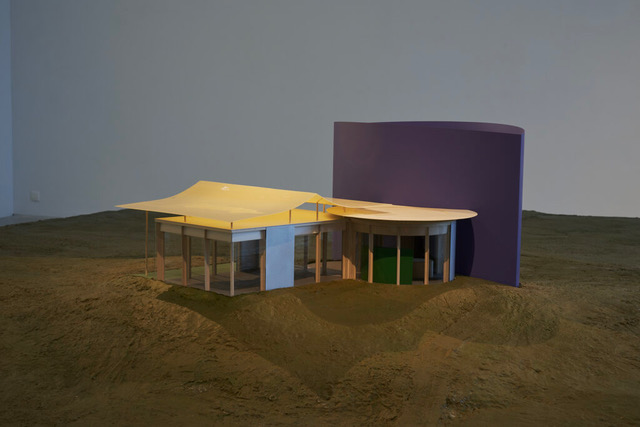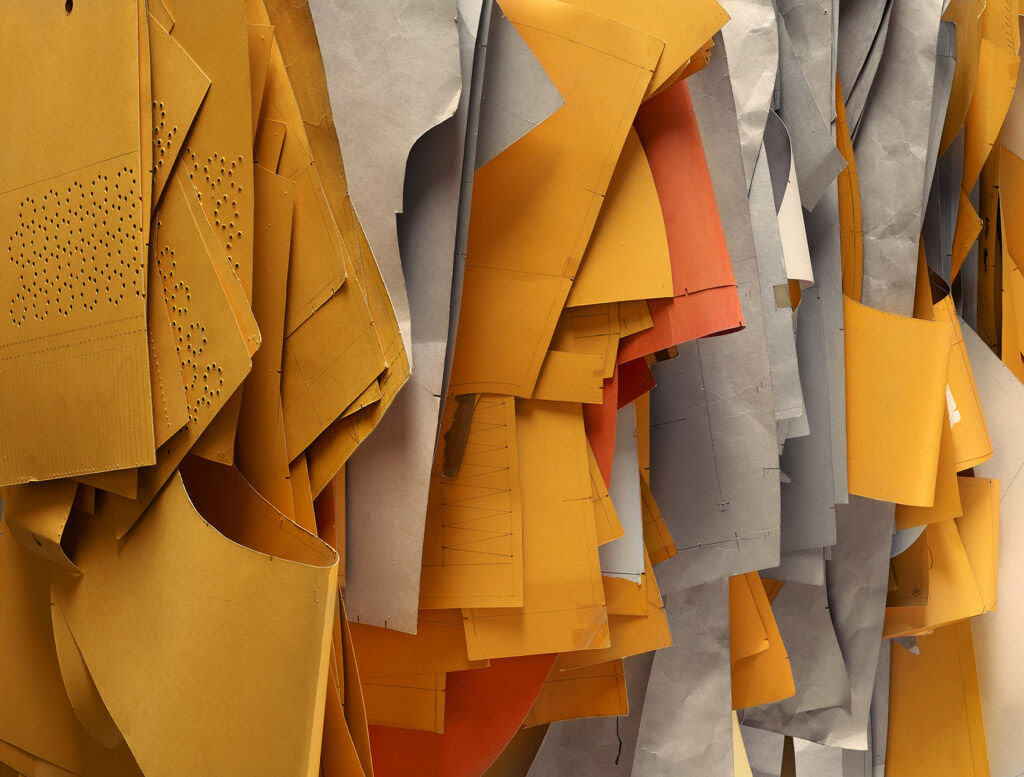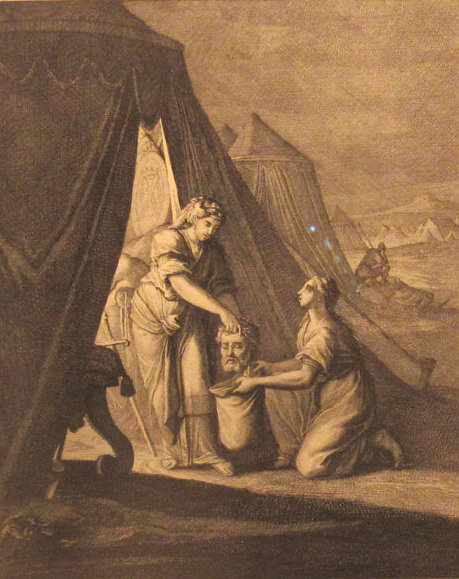© Thomas Demand, VG Bild-Kunst, Bonn. Courtesy the artist and Matthew Marks Gallery/Galerie Sprüth Magers/Esther Schipper, Berlin/Taka Ishii Gallery
Thomas Demand’s practice of building models and photographing them has produced a child in “The Triple Folly,” a baby that has grown into an actual building in Denmark. By the artist’s own admission, it may turn out to be an only child. It’s a genesis story that gave Demand an opportunity to explore a tent-to-pavilion aspect of human habitation through postcards, prints, and publications in the wall vitrine facing “The Triple Folly” model on the second floor at Toronto’s Museum of Contemporary Art. The model was realized through the London firm, Caruso St John Architects with their client, Danish textile firm Kvadrat, as a “breakout” space from the company’s nearby headquarters, suitable for house meetings, seminars, or even a concert, but light on heavy, practical use – a folly, in other words.
Thomas Demand, installation view, House of Card, M Museum, Leuven, 2020
This collaborative interface aspect of Demand’s work is a dominant feature of his House of Card exhibition at MOCA, beginning with Rirkrit Tiravanija’s 2013 Thomas Demand’s Here on the main floor, a life-size model of the karaoke bar Black Label in Kitakaushi, Japan, the exterior of which Demand repeats on the third floor in flimsier board and digital output in paper. The Black Label homage to the artist arose from Demand’s discovery and rendering of the bar at a 2008 residency at Kitakushu’s Centre for Contemporary Art. Tiravanija’s model imbues “life” to an otherwise empty shell, offering karaoke and social ambiance to participating museum attendees.
The model as a latent force that delineates our lived environment is given expression by Demand’s photographs of model details by architects SANAA (Kasuyo Seijma and Ryue Nishizawa) and John Lautner. In Demand’s photos, the pattern template files of the late fashion designer Assedine Alaïa come across as magnified strands of DNA, worn down by years of use. Alaïa’s runway creations and the flesh and blood mannequins that inhabited them may only be inferred in the photos, as are the string of celebrities that came to champion them. SANAA’s contribution to the architectural skins that clothe the art of significant galleries and museums across the globe typifies this crossing of the aesthetic from one discipline to another. Very likely, the inconspicuous site-specific ceiling installation by Martin Boyce on the second floor plays interference on the acoustics of the exhibition space. Its vane-like shapes in muffling the echoes of MOCA’s concrete architecture are a further interface of disciplines.
Thomas Demand, towhee, 2020 Framed Pigment Print, 135 x 172 cm
Viewers of Demand’s 2021 Refuge installation on the third floor at MOCA are afforded a taste of the confinement that NSA whistle-blower Edward Snowden is likely to have experienced in his Sheremetyevo hotel room in Russia as an exile from US authorities. The artist, it seems, had obtained detailed, firsthand experience of Snowden’s presumed room in Russia, upon which his paper and card version of it was based. The journalistic narratives constructed around the whistle-blower as either traitor or patriot exemplify just one front in our current war of information. The re-constructed details of Demand’s Refuge series provide an eerie simulation of the “cell” of its protagonist as casualty of this conflict, and his five weeks of isolation.
Thomas Demand, Refuge V, 2021, C-Print / Diasec, 160 x 200 cm
The subject of Demand’s minute-and-a-half 2001 film, Yard, is Serbian leader Slobodan Milošević and his arrest on charges of war crimes against humanity. In the video, the staccato click of paparazzi camera shutters illuminate a wall behind a chainlink fence as the prisoner is handed over to authorities at the International Criminal Court at The Hague. Since Milošević isn’t visible in the film, we are left to imagine, not only his presence, but any details of the arrest itself.
In the wall vitrine above his postcard display, Demand hung a print of Rudolph Weigel’s Judith and Holofernes. The subject of numerous depictions through art history, Weigel has Judith standing in the doorway of a tent, calmly dropping the head of Holofernes into a sack after her decapitation of the Assyrian general. Implicit in the Biblical story is seduction coupled with its fatal deception.
Rudolph Weigel’s Judith and Holofernes
The roof of Demand’s Triple Folly model was inspired by a creased legal size paper, a nod to the laws and regulations governing the realization of any actual building. As they say, “All is fair in love and war.” Yet as Demand has demonstrated in numerous past works, “folly” arrives in three dimensions, and who is to account for what happens inside the things we build?
Steve Rockwell
Images are courtesy of MOCA
*Exhibition information: House of Card by Thomas Demand & Martin Boyce, Rirkit Tiravanija, Caruso St John, September 16, 2022 – January 8, 2023, Museum of Contemporary Art (MOCA), 158 Sterling Ave, Toronto. Museum hours: Wed – Thu & Sat – Sun 11 am – 6pm; Fri 11 am – 9 pm., MOCA, Toronto,





